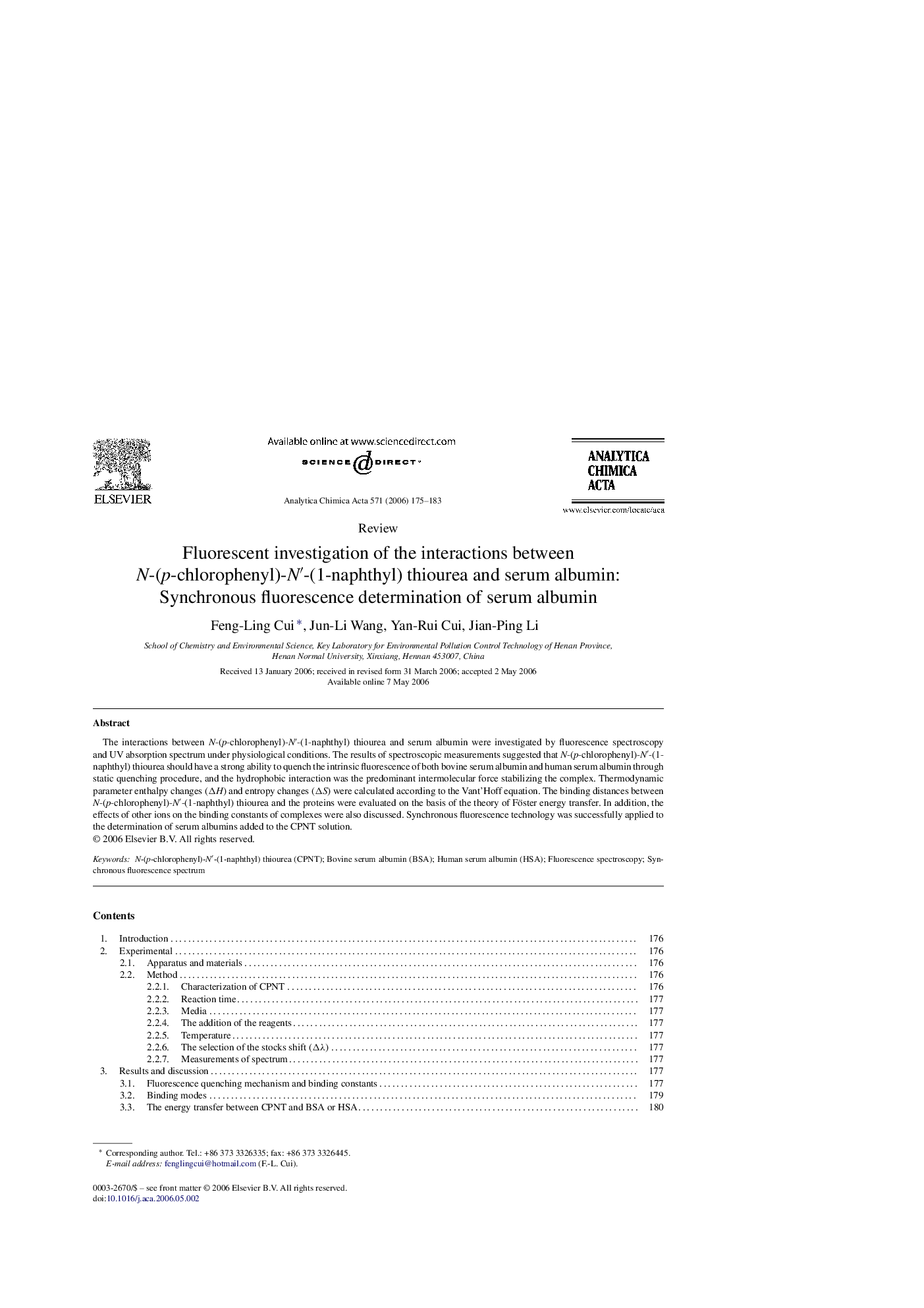| Article ID | Journal | Published Year | Pages | File Type |
|---|---|---|---|---|
| 1171964 | Analytica Chimica Acta | 2006 | 9 Pages |
The interactions between N-(p-chlorophenyl)-N′-(1-naphthyl) thiourea and serum albumin were investigated by fluorescence spectroscopy and UV absorption spectrum under physiological conditions. The results of spectroscopic measurements suggested that N-(p-chlorophenyl)-N′-(1-naphthyl) thiourea should have a strong ability to quench the intrinsic fluorescence of both bovine serum albumin and human serum albumin through static quenching procedure, and the hydrophobic interaction was the predominant intermolecular force stabilizing the complex. Thermodynamic parameter enthalpy changes (ΔH) and entropy changes (ΔS) were calculated according to the Vant’Hoff equation. The binding distances between N-(p-chlorophenyl)-N′-(1-naphthyl) thiourea and the proteins were evaluated on the basis of the theory of Föster energy transfer. In addition, the effects of other ions on the binding constants of complexes were also discussed. Synchronous fluorescence technology was successfully applied to the determination of serum albumins added to the CPNT solution.
